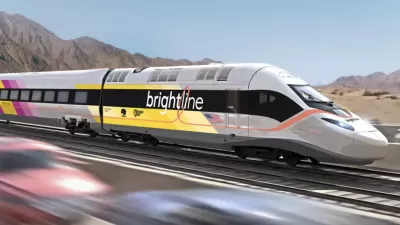Transportation Secretary Ray LaHood said recently that California and Florida are likely to be the first recipients of stimulus funding for high speed rail projects.
"The Federal Railroad Administration, part of the Department of Transportation, will start awarding $8 billion in grants under the economic-stimulus program later this year to states with viable plans for building high-speed rail lines or upgrading existing passenger rail service. The Obama administration, in budget details released Thursday, said it wants to spend another $1 billion annually on high-speed rail over the next five years. Congress must approve the use of that $5 billion as part of its review of the fiscal 2010 budget.
Mr. LaHood said President Barack Obama "believes very deeply" that the U.S. should embark on a decades-long effort to establish a national network of high-speed passenger rail service, akin to the interstate-highway system launched by President Dwight D. Eisenhower more than five decades ago. The U.S. has to date spent more than $1 trillion to build and maintain the interstate highway system.
States and rail advocates are already jockeying to try and secure some of the federal transportation funding. Florida officials said they hoped to secure $1.5 billion to build rail service connecting Tampa and Orlando. California hopes to win significant funding for a planned, high-speed rail system with bullet trains traveling more than 200 miles an hour. The project, which would cost at least $30 billion, would initially link Los Angeles to San Francisco and later expand to San Diego and Sacramento. The state also hopes to secure grants to upgrade its existing network of intercity and commuter lines."
FULL STORY: California, Florida Top List to Secure High-Speed-Rail Funds

Alabama: Trump Terminates Settlements for Black Communities Harmed By Raw Sewage
Trump deemed the landmark civil rights agreement “illegal DEI and environmental justice policy.”

Study: Maui’s Plan to Convert Vacation Rentals to Long-Term Housing Could Cause Nearly $1 Billion Economic Loss
The plan would reduce visitor accommodation by 25% resulting in 1,900 jobs lost.

Why Should We Subsidize Public Transportation?
Many public transit agencies face financial stress due to rising costs, declining fare revenue, and declining subsidies. Transit advocates must provide a strong business case for increasing public transit funding.

Paris Bike Boom Leads to Steep Drop in Air Pollution
The French city’s air quality has improved dramatically in the past 20 years, coinciding with a growth in cycling.

Why Housing Costs More to Build in California Than in Texas
Hard costs like labor and materials combined with ‘soft’ costs such as permitting make building in the San Francisco Bay Area almost three times as costly as in Texas cities.

San Diego County Sees a Rise in Urban Coyotes
San Diego County experiences a rise in urban coyotes, as sightings become prevalent throughout its urban neighbourhoods and surrounding areas.
Urban Design for Planners 1: Software Tools
This six-course series explores essential urban design concepts using open source software and equips planners with the tools they need to participate fully in the urban design process.
Planning for Universal Design
Learn the tools for implementing Universal Design in planning regulations.
Smith Gee Studio
Alamo Area Metropolitan Planning Organization
City of Santa Clarita
Institute for Housing and Urban Development Studies (IHS)
City of Grandview
Harvard GSD Executive Education
Toledo-Lucas County Plan Commissions
Salt Lake City
NYU Wagner Graduate School of Public Service



























